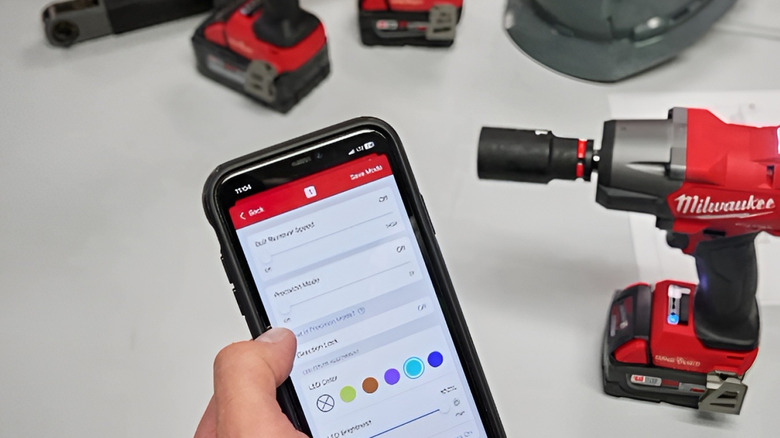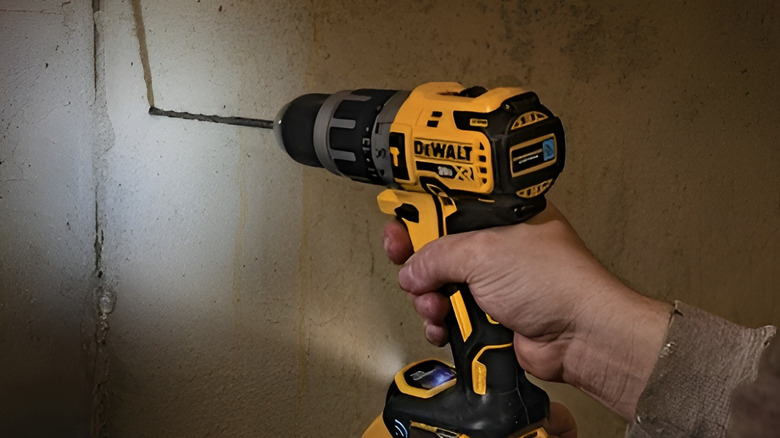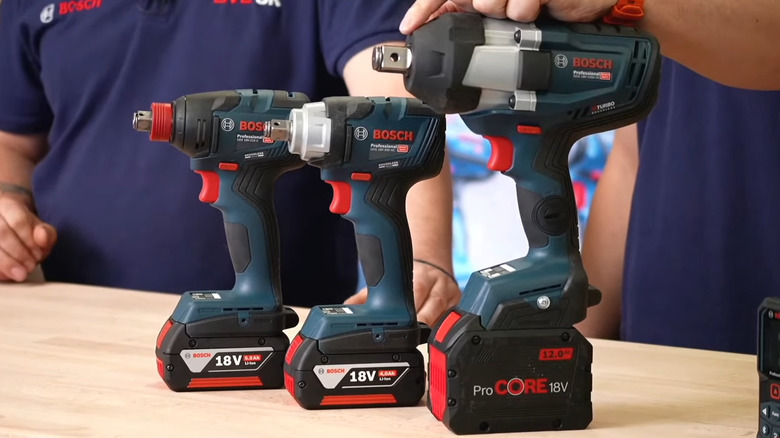The Pros And Cons Of Bluetooth-Connected Power Tools
We may receive a commission on purchases made from links.
When you hear the term Bluetooth, you more than likely think of devices such as wireless headphones, quality speakers, and keyboards to name a few. But the idea of power tools being able to connect through Bluetooth somehow comes across as simultaneously appropriate and odd at the same time considering that these items have been here long before the advent of smartphones and tablets. Nevertheless, bluetooth-enabled power tools have become more readily available than ever before. While they may have yet to dominate the market, it's not hard to imagine them growing more of a presence in the years to come.
As society and the tech it employs becomes more interconnected, it only seems natural that power tools follow suit. Some of the best major power tool brands out there such as Milwaukee, DeWalt, and Bosch have jumped on the bandwagon with their own respective lines of smart power tools ranging from drills to impact drivers to rotary hammers. How does it work? In most cases, these tools can be connected to a specific app where you can customize its performance, record data, and track work status.
There's undeniably a lot to get excited about with smart power tools, but does that mean they're full-proof solutions for every job? Today we'll be answering that question by diving into the good and bad of this ever-evolving market to help give you a well-rounded idea of what to expect.
Pros of Bluetooth-connected power tools
Bluetooth opens the door to a whole world of possibilities with your power tool. While this feature may not make the tool itself function vastly differently than a more traditional model, but can still enhance numerous aspects of its performance. The pros are many, from solving larger logistical issues to bringing more subtle changes to the workplace that can be of great benefit down the line.
Perhaps the best aspect of implementing Bluetooth on power tools is the overall boast in productivity it provides. Within the connected app, users are granted extensive control of numerous specifications of the respective tool's performance and output, such as the amount of torque needed to tighten bolts for a specific project. This eliminates a lot of the guess work that typically occurs and ensures greater consistency and efficiency throughout the process.
Likewise, the data collection that these apps often provide gives workers better insight on their team's productivity. Oftentimes you can even receive alerts about the tool's condition, giving you a better idea of when maintenance or a full-on replacement is needed before it's too late. Using Bluetooth tools is also ideal for sustainability purposes, as the digital tracking and data provided lessens the need for paper recordings.
Cons of Bluetooth-connected power tools
As we mentioned already, Bluetooth-connected power tools have yet to have to be considered industry standard. As a result, there are still certain factors to these items that, while not negating from their many beneficial qualities, may not make them the right choice for certain people or work situations.
The advanced capabilities of these tools gives them a premium status, which is reflected in their hefty price tags. The cost and extra time needed to implement Bluetooth technology drives up the costs by a significant amount when compared to more traditionally engineered tools. For example, as of this writing, you can purchase a Milwaukee M18 18V Cordless 1/2 in. Drill Driver from The Home Depot for $129. However, a M18 Drill Driver under Milwaukee's One-Key lineup, which includes numerous other items that will make your toolkit smarter, goes for $239 at the same retailer. Assessing your needs is especially important to decide whether a smart power tool is a worthwhile investment or if its offerings go far beyond what you need.
Being connected through Bluetooth, while offering many perks, does come with an unfortunate downside, that being the tool's reliance on a sturdy signal. If your phone or other Bluetooth-enabled device is too far from your tool, you won't be able to control it and its performance will take a nose-dive as a result. Take note of your work environment to ensure you can remain close to the tool and that no obstructions will block the signal.


